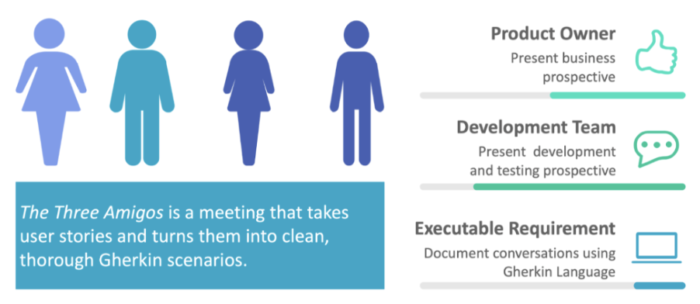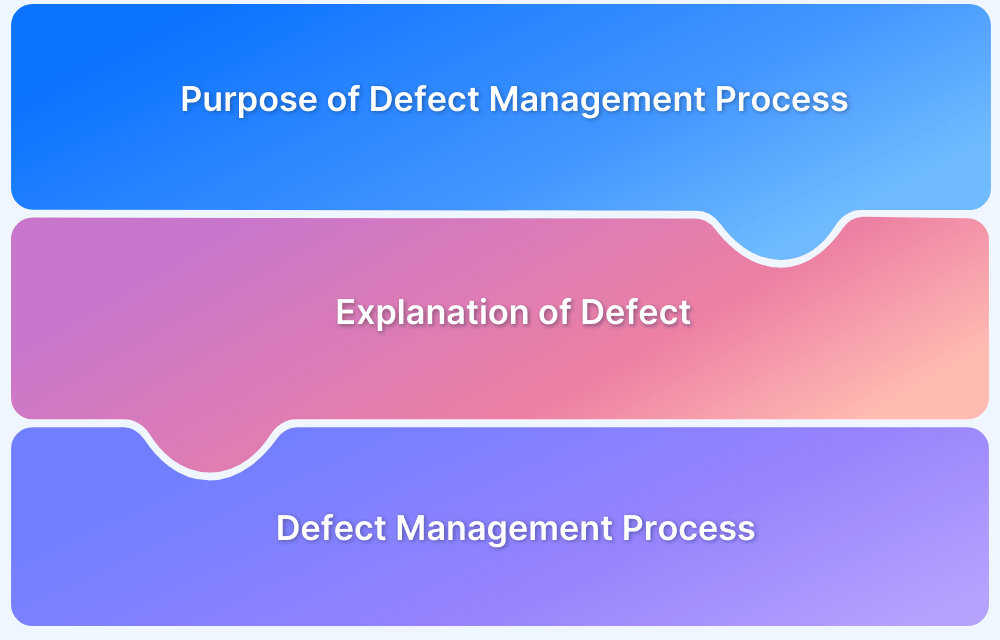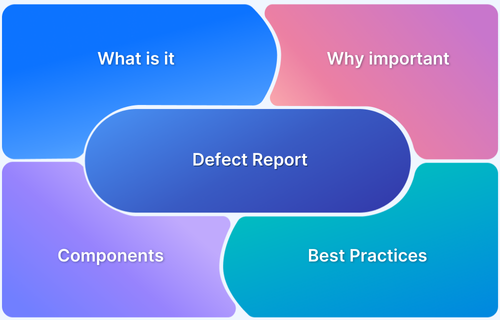Software defects are errors that cause a program to malfunction or fail. Since reliable software is crucial for smooth operations, defects must be identified and fixed.
Overview
Root Cause Analysis (RCA) is a method used to identify the underlying reasons for software defects, helping teams implement effective solutions to prevent recurring issues.
Valid Causes of Defects
- Lack of Collaboration: Poor communication between developers, testers, and stakeholders leads to defects.
- Lack of Code Coverage: Missing unit tests result in undetected issues.
- Poor Test Coverage: Inadequate test cases fail to catch bugs.
- Wrong Testing Framework: An unsuitable framework can limit test effectiveness.
- Not Having a Proper Test Reporting System: Lack of visibility into test results delays issue resolution.
- Lack of a Proper Defect Management Process: Without structured defect tracking, issues remain unresolved.
- Not Considering Real User Conditions when Testing: Testing in controlled environments misses real-world scenarios.
Solutions to Prevent Common Software Defects
- Test-Driven Development (TDD): Write tests before code to improve quality and reduce defects.
- Behavior-Driven Development (BDD): Use user-centric test scenarios to ensure software meets business needs.
- Continuous Integration & Continuous Testing (CI/CT): Automate testing throughout development for early defect detection.
- Effective Communication: Foster collaboration with agile practices, regular meetings, and clear documentation.
- Perform Regression Testing: Retest features to ensure new changes don’t break existing functionality.
- Testing on Real Devices and Browsers: Use cloud-based platforms to replicate real-world conditions.
- Production Specifications Review and Management: Keep requirements clear and updated to prevent misalignment.
This article covers software defects, Root Cause Analysis (RCA), its importance, key defect causes, and solutions to prevent them.
What are Software Defects?
From a Software Development perspective, Software Defects are any deviation between an actual and expected result where the software works perfectly but doesn’t work as per the user’s expectations. Defects can be any fault, error, flaw, or failure in the computer program causing an unexpected or incorrect result. They can also occur in the live software when pre-production tests fail to detect any functional or performance problems disrupting end users’ experience. With applications’ changing nature and dynamics, the range of software defects has become more extensive.
When there are defects, developers and QAs perform root-cause analysis to find their source. There are tools that help them perform RCA. This helps identify underlying issues so systems and processes can be fixed. Instead of temporary fixes, RCA ensures long-term solutions.
Read More: What are different Software Testing Tools?
What is Root Cause Analysis?
Root Cause Analysis (RCA) is a technique in software testing used to find and fix the underlying causes of defects rather than just addressing the symptoms. It involves using specific tools to identify the root issue.
Once RCA uncovers the main problem, the team can resolve it at its source and prevent future occurrences. For example, if a defect is due to a design error, developers can review and correct the design and requirements documents. If a testing mistake caused the defect, testers can update test cases and metrics.
When performed properly, RCA provides valuable insights to improve product design, testing, and overall quality. This leads to a better experience for end users.
Why Root Cause Analysis for Software Defects is important?
Root cause analysis can save an organization or business money and time by helping to find and address problems earlier in the Software Development Life Cycle (SDLC).
Finding defects and fixing them earlier in the development process can help enterprises create better-quality software in a faster, more cost-effective way. This also promotes customer satisfaction and protects the company’s reputation.
Below mentioned are the key benefits of RCA in software developement:
- Improved Software Quality: By identifying the defect source, the problem-solving process becomes more seamless, ensuring superior software quality. This, in turn, leads to the overall improvement of the software and the entire organizational systems.
- Accelerated time to market: Identifying the root causes at the earlier stages of development helps to implement corrective actions appropriately. Thus, the product requires lesser time in testing. Therefore, it reaches the market sooner with fewer issues. This way, companies gain a competitive advantage.
- Improved User Experience: As RCA helps to reduce the defect rate exponentially, it helps ensure optimal user experiences. With efficient RCA, the potential defects in future releases of the software can be controlled effectively, which proves beneficial to companies where the safety and reliability of the software are critical.
- Reduced Cost: The cost of defect fixing increases significantly in the later stages of the development process. Hence, effective RCA can help companies avoid detrimental financial losses and win client trust.
Root cause analysis (RCA) helps save time and money by identifying issues early in the Software Development Life Cycle (SDLC). By addressing defects earlier, companies can produce high-quality software more efficiently, enhance customer satisfaction, and protect their reputation.
BrowserStack Test Reporting & Analytics boosts RCA with its purpose-built Root Cause Analysis Agent. This AI-driven agent performs one-click analysis, correlating logs, reports, and test history to provide accurate insights, all without the need for context-switching. This enables faster identification of root causes, helping teams resolve issues quickly and streamline the development process.
7 Root Causes of Software Defects
Here are some of the root causes of Software Defects that disrupt user experience:
1. Lack of Collaboration
Business requirements may not reach the development/testing team sometimes due to a lack of communication. The customer will have an understanding of how they want their finished product to work or look. Since defects are introduced in the development stage, if the exact requirements are not communicated correctly to the development team, it may lead to defects in the software.
2. Lack of Code Coverage
Code Coverage measures the number of lines of the source code that have been tested, which helps in determining how thoroughly the software was tested. Some software defects can occur due to poor code coverage. This can happen if the codebase is not properly maintained for scalability, and unused code goes unnoticed due to poor coding practices.
3. Poor Test Coverage
Test Coverage determines the percentage of application code that a test case covers and how much code is exercised when those test cases are executed. Poor test coverage often occurs when few tests are written for each user story, making it hard to track unexpected code changes. Additionally, a lack of clarity about the features in a release can result in inadequate testing.
4. Choosing a wrong Testing Framework
A testing framework provides the environment needed to execute automated test scripts. To fully benefit from automation testing, it is essential to use the right framework. An unsuitable testing framework can lead to multiple software defects. Additionally, inconsistencies in test data across different frameworks can cause some defects to go undetected.
5. Not having a proper Test Reporting System in place
A software test report consists of a combined summary of testing objectives, activities, and results. It is generated to help the developers and project managers decide whether to release the software or not. Without a proper test reporting system, businesses can be overwhelmed with excessive testing data, making it difficult to distinguish valuable insights from unnecessary information.
Check out Top 5 Selenium Reporting Tools
6. Lack of a proper Defect Management Process
Defect management is the process organizations use to handle defect discovery, removal, and process improvement. If not performed properly, defects may go unnoticed and become more severe, increasing costs and causing significant damage. This can lead to customer loss, reduced revenue, and a damaged brand reputation.
7. Not considering real user conditions when testing
Testing in real user conditions helps analyze the user experience in detail, including factors like loading times, WiFi and network connectivity, and map accuracy. Insufficient real-user simulation in testing can result in unexpected errors that were not identified in test conditions. This often occurs when applications are tested on emulators or simulators, as they cannot fully replicate native environment conditions.
Solutions to prevent Common Software Defects
While the previous section covers the basic root causes of software defects, here are some solutions that can be used to overcome them:
1. Test-Driven Development (TDD)
Test-Driven Development is a powerful technique for preventing issues caused by insufficient testing. TDD encourages creating failed tests for a feature/product even before it is developed. As the development of the feature shows some progress, the test cases begin to pass, verifying the expected behavior of the feature. If tests are created before the feature or product itself, then the likelihood of the product reaching its end-users untested is greatly reduced.
2. Behaviour-Driven Development (BDD)
BDD Testing combats issues derived from ill-defined requirement specifications by bringing business and QA professionals on the same page. BDD also promotes frequent conversations among the key stakeholders (Business Analysts, Devs, and QAs), also known as ‘The Three Amigos” to avoid miscommunication. keeping everyone on the same page.
BDD tests are written in plain English, which makes the participation of team members easier at different stages of test reviews without having to learn the code syntax. This flexibility and transparency in the creation and review of test cases help in reducing bugs caused due to communication gaps between the teams.
Also Read: How to achieve Advanced BDD Test Automation
3. Continuous Integration Continuous Testing (CICT)
Continuous Integration and Continuous Testing ensure that every change of code that is integrated into the central code repository should be automatically tested by predefining test cases. Continuous Testing is only possible when test automation is implemented and seamlessly integrated with the CI/CD pipeline. It helps to assess the quality of software developed at each stage, thereby leading to the early discovery of critical bugs and saving time and costs. Moreover, CI CT delivers the product faster, giving more time to market with a viable product and continuous feedback mechanism.
But to maximize the benefits of CI CT, it is essential to implement a strong Continuous Testing Strategy for DevOps.
4. Effective Communication
Clear and open communication between team members can help in highlighting missing or conflicting scenarios in the specifications. At every stage, from finding requirements to defect tracking, if the team members discuss the different use cases or scenarios that they think are missing/conflicting, then such issues can be identified earlier and much more quickly.
Also, a large number of bugs arise out of assumptions made during implementation. This can be reduced by encouraging teams to seek inputs from relevant stakeholders and brainstorm external constraints to gauge the possible expected behaviors in cases of missing/conflicting specifications.
5. Perform Regression Testing
Regression testing is a powerful way to find defects that occur due to any changes or updates in the code. Regression testing can also be run once you’ve identified defects in the first cycle and implemented the changes to fix them. It helps QAs to see whether the defect is fully resolved or has resurfaced. It also highlights if the devs may have broken something else accidentally while fixing a defect.
So regression testing identifies areas that can potentially be affected by defect fixes and reruns the test cases for that area to ensure no new defects have been introduced.
6. Testing on Real Devices and Browsers
Testing under real user conditions is a great way to catch defects before they make it to the real user environment. This can mitigate the risk of missing production defects that don’t show up in a more controlled testing environment.
Using cloud-based real device infrastructure for running functional tests can help identify defects that could occur due to a real user condition acting as a trigger. Tools like BrowserStack allow access to 3500+ real devices and browsers on its cloud ranging from the legacy to the latest versions for comprehensive testing.
Features like Geolocation Testing, Network Simulation, QR Code Testing, Barcode Testing, Biometric Authentication, help in finding those unidentified bugs that can easily escape through the testing cycles over controlled environments like Emulators and Simulators.
7. Production Specifications Review and Management
As the scope of the company changes, the product’s specifications related to it also changes. Reviewing and tracking the changes in specifications may require a dedicated effort. Early detection of any changes in the specifications that might cause a potential conflict can help in preventing bugs in the product’s implementation.
Best Practices for Effective Root Cause Analysis
Effective Root Cause Analysis (RCA) ensures that recurring issues are identified and addressed, improving overall software quality and development efficiency. Implementing the following best practices can help teams maximize the effectiveness of their RCA efforts:
- Clearly Define the Problem: Document symptoms and gather all relevant data to ensure accurate identification.
- Collect Comprehensive Data: Use logs, error messages, and test reports to gather complete information.
- Correlate Historical Data: Identify patterns by comparing current test results with past issues and solutions.
- Involve the Right Stakeholders: Engage development, QA, and operations teams for diverse insights.
- Document and Track: Keep detailed records of the RCA process and findings for future reference.
- Test Remediation Actions: Verify that implemented fixes fully resolve the issue through thorough testing.
- Implement Preventive Measures: Introduce changes to prevent similar issues from occurring in the future.
- Leverage Automation and AI: Use tools like BrowserStack Test Reporting & Analytics for AI-driven, efficient RCA and actionable insights.
How BrowserStack Test Reporting & Analytics help with Root Cause Analysis?
BrowserStack Test Reporting & Analytics streamlines the Root Cause Analysis (RCA) process with AI-powered insights that help teams quickly identify and resolve issues. Here’s how it can assist with RCA:
- AI-Driven Detection: The Root Cause Analysis Agent analyzes test data, logs, and history to pinpoint failures and provide accurate insights.
- Actionable Recommendations: The platform offers smart, data-driven remediation steps, categorizing failures and suggesting next actions.
- Automated Failure Categorization: Automatically groups and categorizes failures, reducing manual analysis time.
- Centralized Dashboard: A unified view of test results and root causes for faster identification and resolution of issues.
- Improved Collaboration: Real-time data shared across teams for seamless issue resolution and faster decision-making.
- Faster Remediation: AI insights help fix issues quickly, integrating into CI/CD pipelines for continuous testing.
With BrowserStack’s Root Cause Analysis Agent, you can further enhance the RCA process. This tool helps diagnose issues faster by leveraging AI-powered failure analysis, providing insights on test failures within minutes. With its ability to automatically categorize failures and offer actionable recommendations, it reduces the time spent troubleshooting, allowing your team to focus on delivering high-quality code quickly and efficiently.
Conclusion
Software defects are almost unavoidable. Nonetheless, efficient RCA can help developers or testers build/test and deliver flawless software products and deliver optimal experiences to customers. By identifying the root causes of underlying performance and functional issues in applications, software companies can ensure high-quality software and speed up the time to market, leading to an overall enhancement of brand values and customer loyalty.
BrowserStack’s Root Cause Analysis Agent leverages AI to automatically detect and diagnose test failures, providing actionable insights that help teams quickly resolve issues and improve software quality, accelerating delivery and enhancing customer satisfaction.








